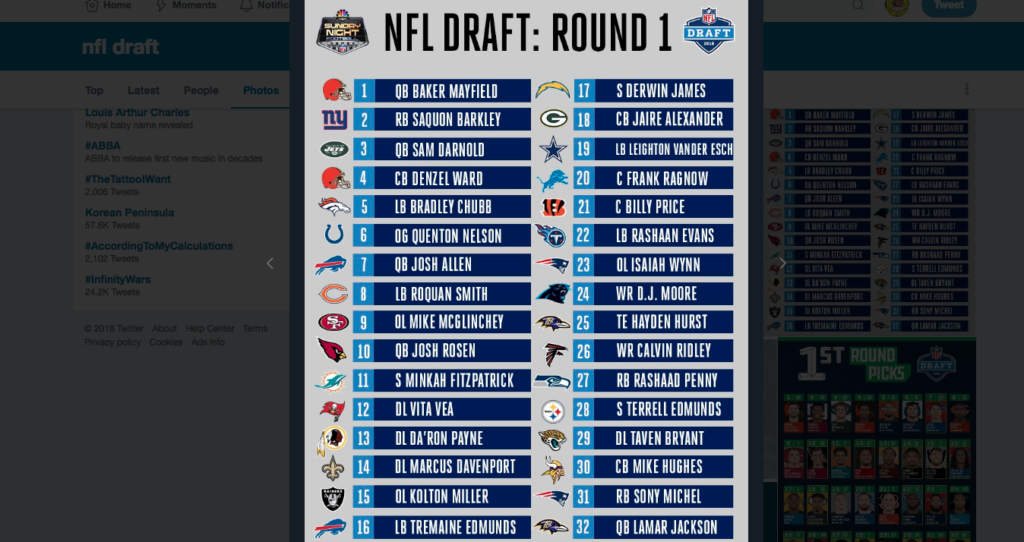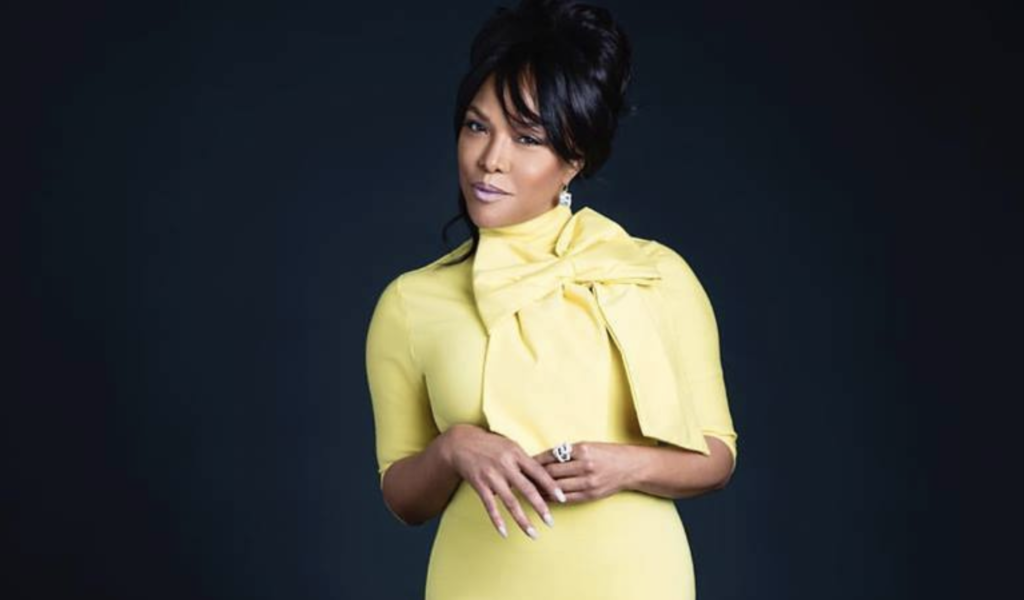How’d That NFL Mock Draft Work Out?
27 Apr, 2018
1. Browns — Baker Mayfield, QB, Oklahoma: The reigning Heisman Trophy winner becomes the 11thquarterback Cleveland has drafted since its 1999 rebirth, and the fifth in the first round. But Mayfield, who walked on at Texas Tech and did the same in Norman, Okla., is the first passer the Browns have taken first overall since Tim Couch in 1999. The expectation is that he’ll obviously be the long-awaited savior for a franchise that’s never reached the Super Bowl and almost surely set itself back in recent years by passing on opportunities to take Carson Wentz in 2016 and Deshaun Watson last April. At 6-1, 215 pounds, Mayfield is built similarly to Tyrod Taylor, who was acquired earlier this offseason by Cleveland and tabbed by coach Hue Jackson as the starter. In the last two years, Mayfield completed more than 70% of his passes, throwing for 8,592 yards, 83 TDs and 14 INTs. If that kind of accuracy and production translates to the pros, Taylor is in for an instant battle. Mayfield’s height and brashness had been perceived knocks against him, but his fiery persona and leadership have also convinced some teams he could be as good as vertically challenged passers like Drew Brees and Russell Wilson. And let’s remember what Mayfield said about the Browns at the scouting combine: “If anybody’s going to turn that franchise around, it’s going to me.”
2. Giants — Saquon Barkley, RB, Penn State: Widely regarded as the top player in this draft, he aced the scouting combine (4.4 40, 29 reps on bench, 41-inch vert) and posted 3,801 yards from scrimmage and 82 catches in his last two years for the Nittany Lions. Barkley is a bigger, faster version of Adrian Peterson coming out of college and instantly legitimizes a poor Giants ground game. He forms a dangerous trio with Eli Manning and Odell Beckham and should help instantly return the franchise to contending status for the short run and long term. An every-down player with great speed, instincts and intangibles, there’s no reason to expect Barkely won’t make the same kind of rookie splash that Todd Gurley, Ezekiel Elliott and Leonard Fournette have had in recent years.
3. Jets (from Colts) — Sam Darnold, QB, Southern California: At the price of three second-round picks to move up three spots, New York goes back to the Trojan well for the second time in nine years after Mark Sanchez flamed out after an early flurry. Darnold seemed like a no-brainer at No. 1 overall before the 2017 season began, but 22 turnovers last year apparently depressed his stock just a touch. But it must be noted his supporting cast was better in 2016 (including JuJu Smith-Schuster). The 6-3, 221-pounder threw for 57 TDs in two years as USC’s starter and excels making plays on the move, the kind of improvisation he may have to call on frequently as the Jets continue to build the O-line and arsenal around Darnold. If New York decides not to throw its highest-drafted QB since Joe Namath (1965) into the fire right away, 38-year-old Josh McCown remains as an option and embraces the role of mentor toward young passers.
4. Browns (from Texans) — Denzel Ward, CB, Ohio State: Cleveland never sufficiently replaced Joe Haden but adds this draft’s best pure cover corner to its ascendant defense. Despite his small frame (5-11, 183), Ward is a ferocious hitter who can capably cover outside or in the slot. Should be fun watching him square off against Antonio Brown twice per season. The Buckeyes have now produced four first-round corners since 2016 (Marshon Lattimore, Gareon Conley and Eli Apple).
5. Broncos — Bradley Chubb, DE, North Carolina State: He’s referred to himself as a combination of Khalil Mack and new teammate Von Miller, who co-signed Chubb’s comparison. At 6-4, 269 pounds, Chubb may have to become accustomed to standing up in Denver’s 3-4 defense but will nonetheless became part of a fearsome pass rush which already includes Miller and Shane Ray. And Chubb isn’t a one-trick pony, priding himself on relentless effort and his ability to also stop the run. Could be fun if he starts swiping the hand towels from Philip Rivers, Derek Carr and Patrick Mahomes.
6. Colts (from Jets) — Quenton Nelson, G, Notre Dame: Is there a better way to support Andrew Luck’s recovery than by providing a protector who will clean up the pocket (Indianapolis allowed a league-worst 56 sacks in 2017) while adding a serious boost to a ground game in need of major help? Nelson becomes only the third pure guard picked in the top 10 in the past two decades, an indication of what a special player he is despite his often devalued position.
7. Bills (from Buccaneers) — Josh Allen, QB, Wyoming: Buffalo GM Brandon Beane completes his long-expected move up the board after getting up to the 12th spot earlier this offseason. Allen finds a fairly soft landing after a series of offensive tweets from his youth started his draft day off in less-than-ideal fashion. Allen has as strong an arm as any prospect in recent memory and underrated athleticism at 6-5 and 237 pounds that will make him a red-zone weapon on the ground. But his 56.2% completion rate in college is a concern, and he never really dominated largely average competition, posting just two 300-yard games in three seasons for the Cowboys. If Allen proves he’s not NFL-ready, which is the expectation, AJ McCarron was signed in free agency to serve as a bridge.
8. Bears — Roquan Smith, LB, Georgia: At 6-1, 236 pounds, he might seem a touch undersized to play inside in Chicago’s 3-4 scheme. But Smith will cover a lot of ground and provide leadership to an underrated defense that finished 10th overall last year. He’s also very effective as a blitzer, especially on delays, and posted 6½ sacks last season. Smith reunites with former Bulldogs teammate Leonard Floyd as part of a nucleus that could help this club be a playoff dark horse in 2018.
9. 49ers — Mike McGlinchey, T, Notre Dame: That’s two Irish blockers off the board in the last four picks. McGlinchey should immediately plug into the right side opposite Joe Staley, giving new franchise QB Jimmy Garoppolo a very nice tackle tandem for the foreseeable future. McGlinchey should also provide a spark to a Niners ground game that ranked just 21st in 2017.
10. Cardinals (from Raiders) — Josh Rosen, QB, UCLA: Perhaps the most pro-ready passer coming out in 2018, Rosen is nearly flawless mechanically in terms of his delivery and footwork honed as an accomplished tennis player. He reads the field well at all levels and is highly intelligent. He did suffer two concussions last year and won’t make plays with his legs. Still, this is a coup for Arizona, which has Sam Bradford on a one-year deal but, before Thursday, didn’t have an obvious succession plan in the wake of Carson Palmer’s retirement. Now Rosen joins a loaded quarterback division that includes Garoppolo, Russell Wilson and Jared Goff.
11. Dolphins — Minkah Fitzpatrick, DB, Alabama: A highly versatile defender, he can play safety, dime linebacker, slot corner and brings a reputation as a strong leader. It will be interesting to see if Miami starts Fitzpatrick at corner to see if he can thrive there given the struggles of Cordrea Tankersley and Xavien Howard in 2017. Fitzpatrick should be able to earn his stripes in practice against Danny Amendola before matching up against the likes of Julian Edelman.
12. Buccaneers (from Bengals via Bills) — Vita Vea, DT, Washington: Another very nice piece joins a defense that ranked dead last in 2017. Vea will pair with perennial Pro Bowl DT Gerald McCoy to give Tampa Bay a monstrous duo inside between new rush ends Jason Pierre-Paul and Vinny Curry. At 6-4 and 347 pounds, Vea has scary athleticism for a man his size — he was a running back in high school — but will have to prove he can be a factor on passing downs after posting just 9½ sacks in three seasons with the Huskies.
13. Redskins — Da’Ron Payne, DT, Alabama: Makes sense for Washington, which gave up more rushing yards than any other team last season. Payne reunites with Jonathan Allen, the ‘Skins’ first-round pick last year on a three-man front long on talent but not experience. Payne isn’t nearly as accomplished a pass rusher as Allen but is extremely strong — he can bench press 500 pounds — and should shut down interior run lanes, command double teams and get enough push on the pocket to flush quarterbacks outside.
14. Saints (from Packers) — Marcus Davenport, DE, Texas-San Antonio: New Orleans makes a huge jump up from No. 27 to get the man perceived as the draft’s second-best defensive end after Chubb in a year weak on edge talent. A very long player at 6-6, 264 pounds, Davenport is raw but collected 8½ sacks and 17½ tackles for loss last season. He shouldn’t see many, if any, double teams lining up opposite all-pro Cam Jordan. The question now is whether Davenport can put the NFC South champs over the top in 2018. He should certainly help in a division where suppressing Cam Newton, Jameis Winston and Matt Ryan is of paramount importance.
15. Raiders (from Cardinals) — Kolton Miller, OT, UCLA: At 6-9, 309 pounds, he may be the best pure left tackle prospect in a draft with few of them. But with incumbent LT Donald Penn turning 35 Friday, it’s obvious Jon Gruden wants to safeguard Derek Carr well into the future, even if Miller doesn’t start immediately.
16. Bills (from Ravens) — Tremaine Edmunds, LB, Virginia Tech: Buffalo deals up to add a 6-5, 253-pound 19-year-old to the middle of its defense after losing Preston Brown, who tied for the league lead in tackles last season, in free agency. Despite his size, Edmunds runs like a deer and may plug in as the Bills’ next middle linebacker on base downs. However, his size will make him a tempting option as a pass rusher as he refines his skills and instincts.
17. Chargers — Derwin James, S, Florida State: A bit of a fall for a player who said he’d be a top-10 pick at the scouting combine. But James clearly has top-10 talent, and this is a great pickup for the Chargers, who did not re-sign Tre Boston. James joins a defense run by Gus Bradley, who adheres to Seattle’s philosophy — apropos since James could be a combination of Kam Chancellor and Earl Thomas if he maximizes his estimable potential. James’ skill set is similar to Fitzpatrick’s, but he’s a more imposing hitter if not as adept in coverage — not a problem given the Bolts are flush at corner.
18. Packers (from Seahawks) — Jaire Alexander, CB, Louisville: It was obvious the Pack wanted corner help when they made an offer for Chicago’s Kyle Fuller earlier this offseason, which the Bears matched. Alexander should form a nice young duo with Kevin King, last year’s Round 2 pick, though he struggled as a rookie. Injuries limited Alexander in 2017, but he picked off five passes two years ago. His return skills are a bonus.
19. Cowboys — Leighton Vander Esch, LB, Boise State: Huge for an LB at 6-4, 256 pounds, he has tremendous range honed while playing eight-man football in high school in tiny Riggins, Idaho. The selection of Vander Esch is a multi-pronged hedge for Dallas, which lost Anthony Hitchens in free agency, has yet to see Jaylon Smith regain his form after his horrific knee injury at Notre Dame and constantly must compensate for the injuries that dog Sean Lee, who has never played a 16-game schedule.
20. Lions — Frank Ragnow, C, Arkansas: The first pick of the Matt Patricia era isn’t sexy but should be a boon to the league’s worst ground game two of the past three seasons. A three-year starter for the Razorbacks, Ragnow, who only recently began generating first-round buzz, can play guard or center.
21. Bengals (from Bills) — Billy Price, C, Ohio State: Nice recovery for Price, whose stock as a first rounder was jeopardized when he suffered a pectoral injury while bench pressing at the combine. But he should be an instant upgrade at center (or even guard) after Cincinnati let Russell Bodine go. The offensive line undermined the Bengals throughout 2017 but suddenly looks much more formidable with Price and LT Cordy Glenn, who was obtained via trade in March.
22. Titans (from Chiefs via Bills and Ravens) — Rashaan Evans, LB, Alabama: He had six sacks and 13 TFLs in his senior season despite dealing with a nagging groin injury. Improved pass coverage was a personal point of emphasis in 2017, and that will need to continue if he’s to assume the starting role vacated by Avery Williamson. But Evans is rangy and should be a nice addition to an underrated defense.
23. Patriots (from Rams) — Isaiah Wynn, OL, Georgia: He has very nifty feet, and apparently that’s enough to get him a chance to replace Nate Solder as Tom Brady’s new bouncer on the blind side. Still, Wynn (6-2, 313) isn’t nearly as long as 6-8, 325-pound Solder and will have to prove he can handle elite NFL edge rushers after many draft experts predicted his NFL future at guard.
24. Panthers — DJ Moore, WR, Maryland: Finally, a wideout gets picked. After hauling in 80 passes for 1,033 yards last year for the Terps, the 6-0, 210-pounder could soon find himself as Carolina’s No. 1 receiver in an offense that will evolve under new coordinator Norv Turner. Moore thrives racking up yards after catch, and his game is somewhat similar to Curtis Samuel, a converted running back who was the Panthers’ second-round pick in 2017. Between Moore, Samuel, Christian McCaffrey and Greg Olsen, Cam Newton could find himself getting rid of the ball a lot more quickly as a rule of thumb.
25. Ravens (from Titans) — Hayden Hurst, TE, South Carolina: Outgoing GM Ozzie Newsome, a Hall of Fame tight end himself, makes Hurst the first tight end off the board this year. He should fill the void left by Dennis Pitta’s premature retirement. Hurst dropped just one pass in college while catching 100. A former baseball player, he will be 25 on opening day, but his age isn’t likely to bother 33-year-old QB Joe Flacco.
26. Falcons — Calvin Ridley, WR, Alabama: Somewhat of a luxury pick for a team with very few holes, Ridley will unite with fellow Crimson Tide star Julio Jones. Probably the most polished route runner in this class, Ridley averaged 75 catches and more than 900 yards during his three seasons in Tuscaloosa despite sometimes shaky QB play. He skews small (6-1, 189) but should provide a dangerous slot option between Jones and Mohamed Sanu after Taylor Gabriel left for Chicago. Ridley’s 4.4 speed will also make defenses think twice about rolling too much coverage toward Jones.
27. Seahawks (from Saints via Packers) — Rashaad Penny, RB, San Diego State: A man among boys in the Mountain West, he led the country by running for 2,248 yards in 2017 and scored 23 TDs on the ground. He also took seven kickoffs to the house over the past three seasons. Penny’s a load given his combo of size (5-11, 220) and 4.46 40 speed; yet, he also nimbly changes direction. A bit of a surprise as the second back off the board and also a somewhat head-scratching selection for Seattle, which already has a wealth of runners on the roster but seemed to need defensive help amid an ongoing overhaul on that side of the ball.
28. Steelers — Terrell Edmunds, S, Virginia Tech: The older brother of Virginia Tech LB Tremaine Edmunds, the duo becomes the first set of brothers to be first-round picks in the same draft. With no linebackers on the board worthy of replacing Ryan Shazier, Pittsburgh opts for much needed safety help instead … even if Edmunds seems a stretch this high. Still, his 4.46 speed should allow him to play either safety spot next to newly signed veteran Morgan Burnett, who’s versatile himself.
29. Jaguars — Taven Bryan, DT, Florida: This sure seems like a case of the Jags sticking to their board, because they certainly don’t need defensive line help. Bryan isn’t highly experienced, but his motor’s always revving, and he can play inside or out like new teammates Malik Jackson and Calais Campbell. But good teams don’t steer away from talent, and Tom Coughlin’s Giants won two Super Bowls with a deep fleet of pass rushers.
30. Vikings — Mike Hughes, CB, Central Florida: GM Rick Spielman must have let Mike Zimmer make this pick given the coach’s endless desire to collect talented corners. Hughes may replace unsigned Terence Newman as the Vikes’ new nickelback between Xavier Rhodes and Trae Waynes, both first rounders themselves. However, Hughes’ real impact as a rookie may be as a returner after he averaged nearly 32 yards a kickoff in college and almost 17 per punt return.
31. Patriots — Sony Michel, RB, Georgia: Get ready for a lot of Alvin Kamara comparisons, but they’re not inaccurate. Michel averaged 7.9 yards a carry last year against SEC competition and ran for 16 TDs despite sharing the backfield with Nick Chubb. He becomes New England’s first first-round running back since Laurence Maroney in 2006 and should immediately shoot to the top of a depth chart that lost Dion Lewis to free agency.
32. Ravens (from Eagles) — Lamar Jackson, QB, Louisville: Newsome’s swan song will be one to remember as he trades back into Round 1 for the 2016 Heisman Trophy winner. Jackson passed for 3,000 yards and rushed for 1,500 each of the past two seasons, the only player in college football history to post such historic numbers. And, make no mistake, he did this from a pro-style offense coached by Bobby Petrino. Still, Jackson will have to work on his mechanics, one reason he was a 57% passer in college. He should have time to develop as Flacco winds down and may find an important tutor in Baltimore’s newly signed backup, 2012 offensive rookie of the year Robert Griffin III. A draft bookended by Heisman winners becomes the first since 1999 with five quarterbacks taken in the first round.
USA Today
Image SNFonNBC twitter
Mentioned In This Post:
About the author
Related Posts
-
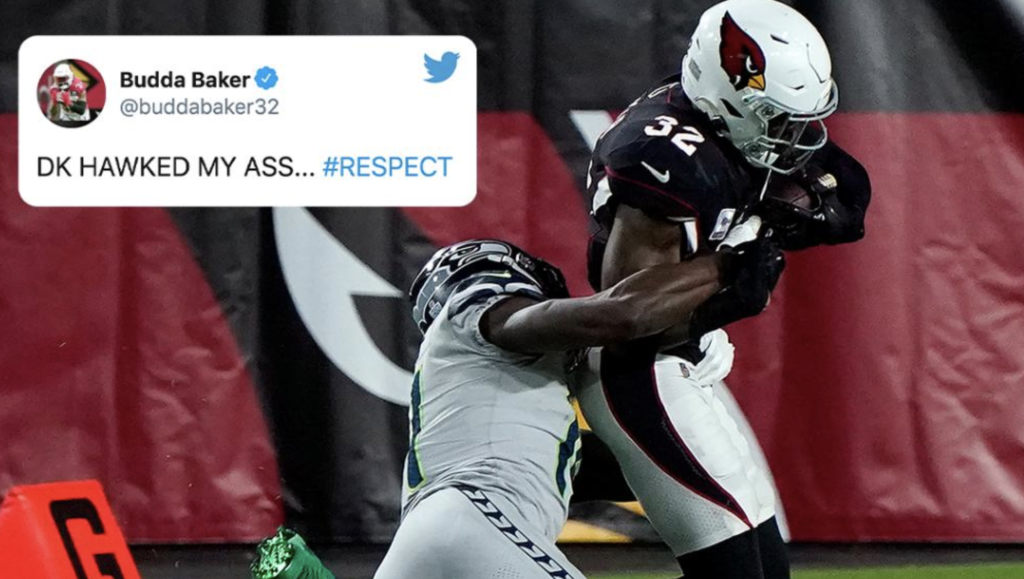
The Pick Six That Wasn't
-
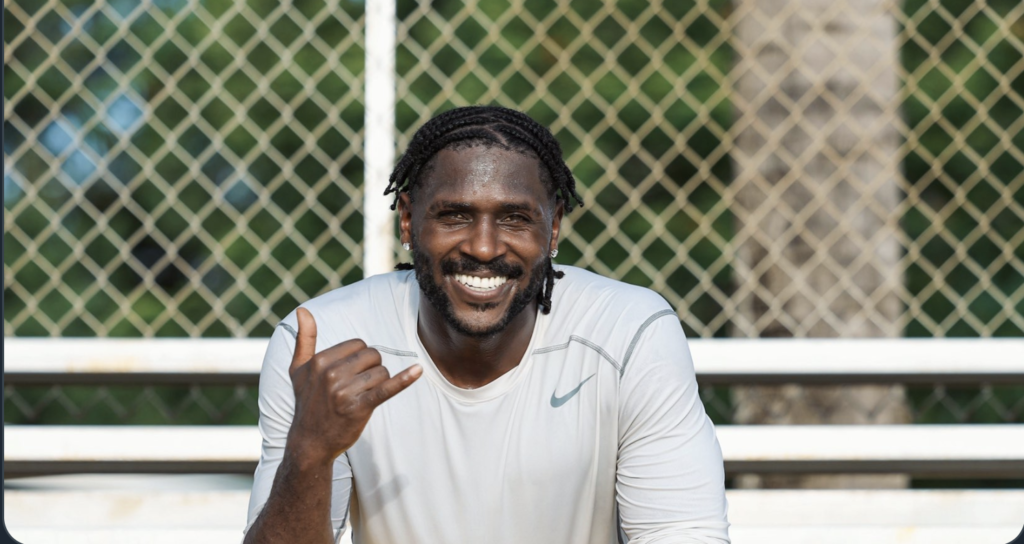
Where Will Antonio Brown Play Next?
-
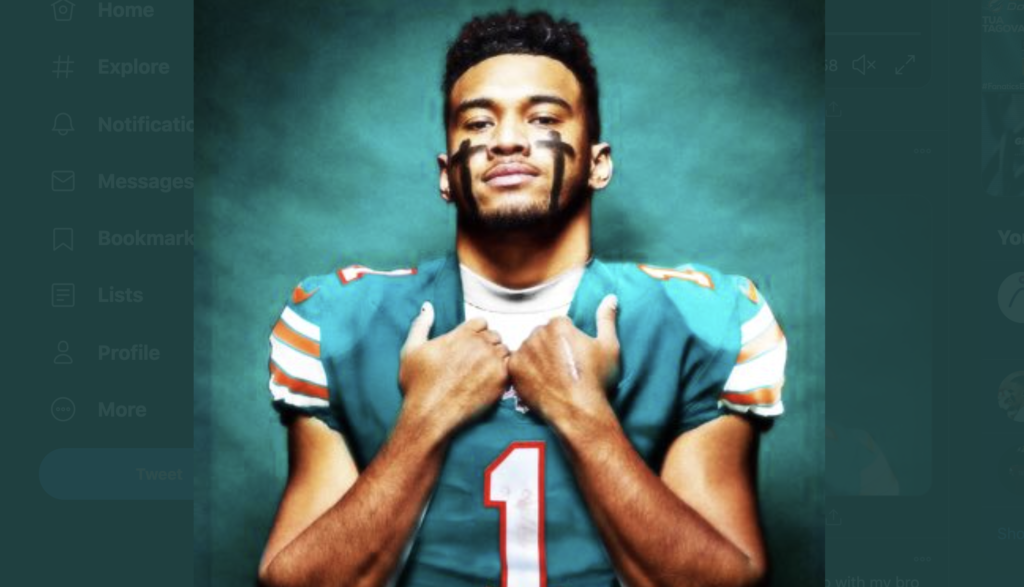
Roll Tide! It's Tua Time In Miami
-
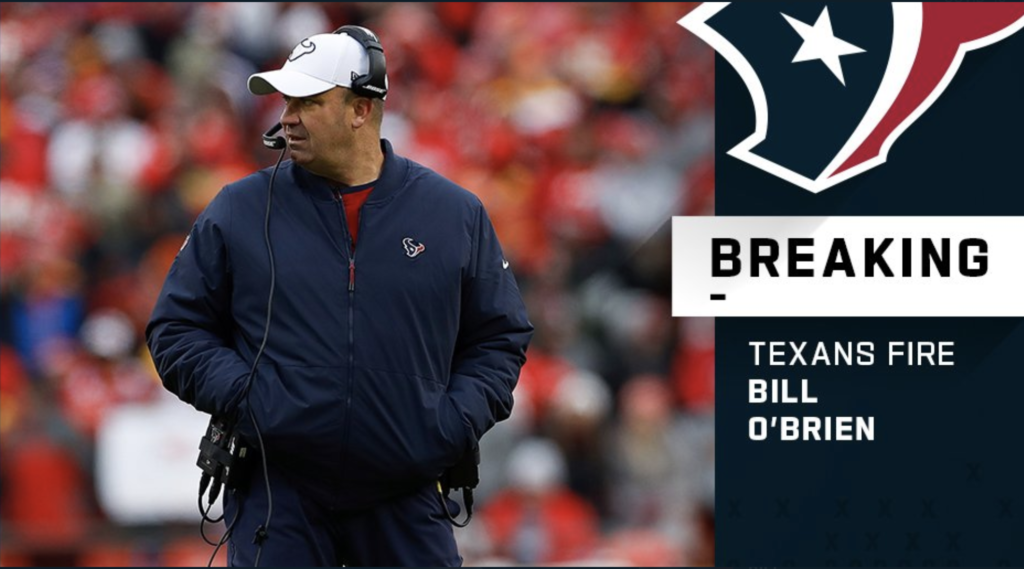
Trade Hopkins, Lose Your Job
-
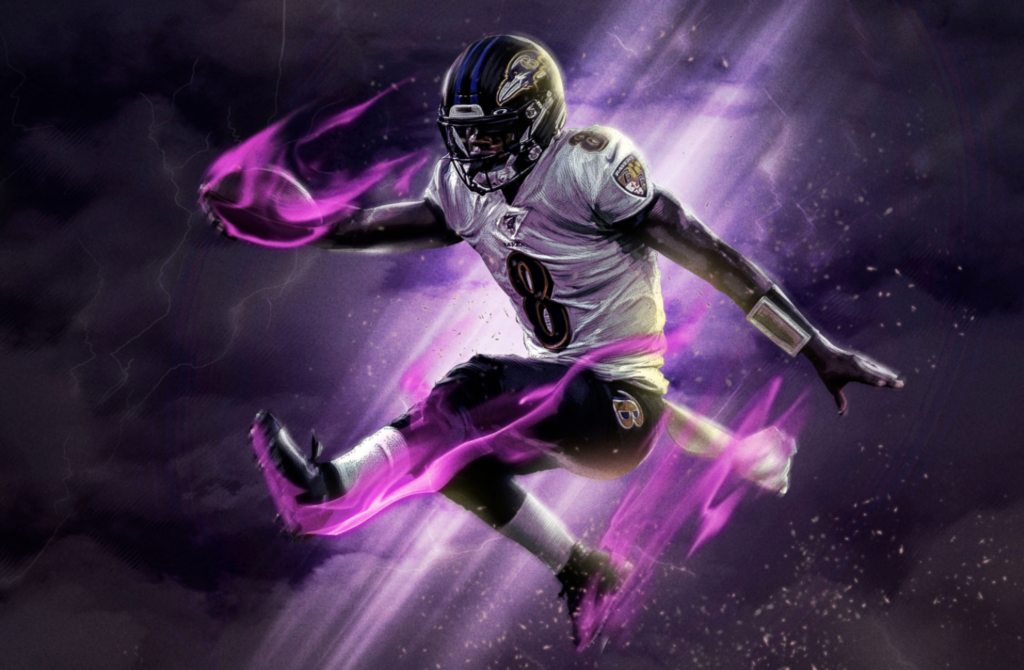
Running Through The Record Books
-
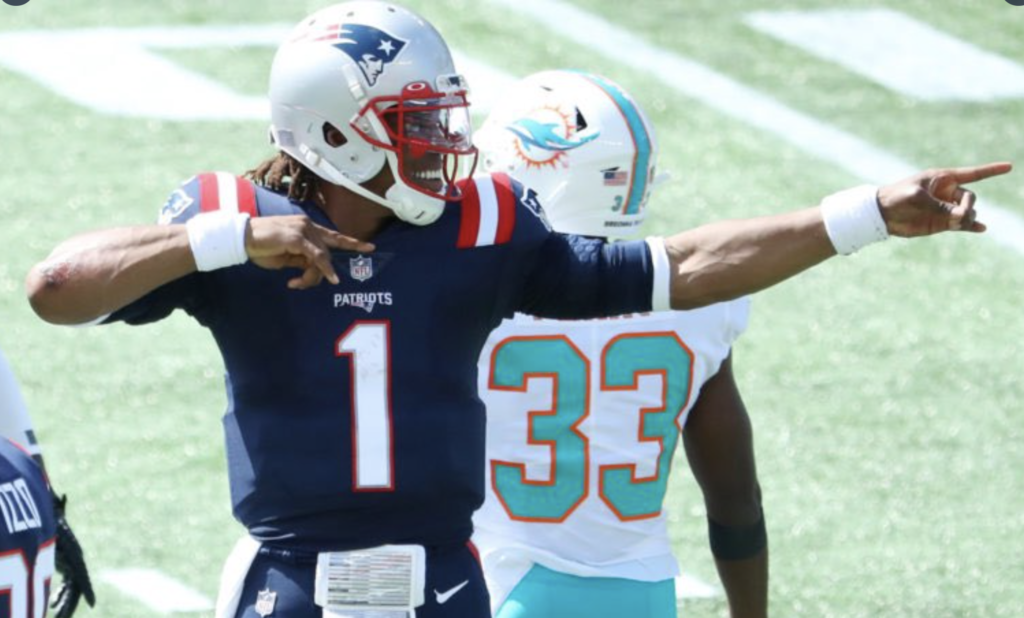
NFL Superstar Tests Positive for COVID
-
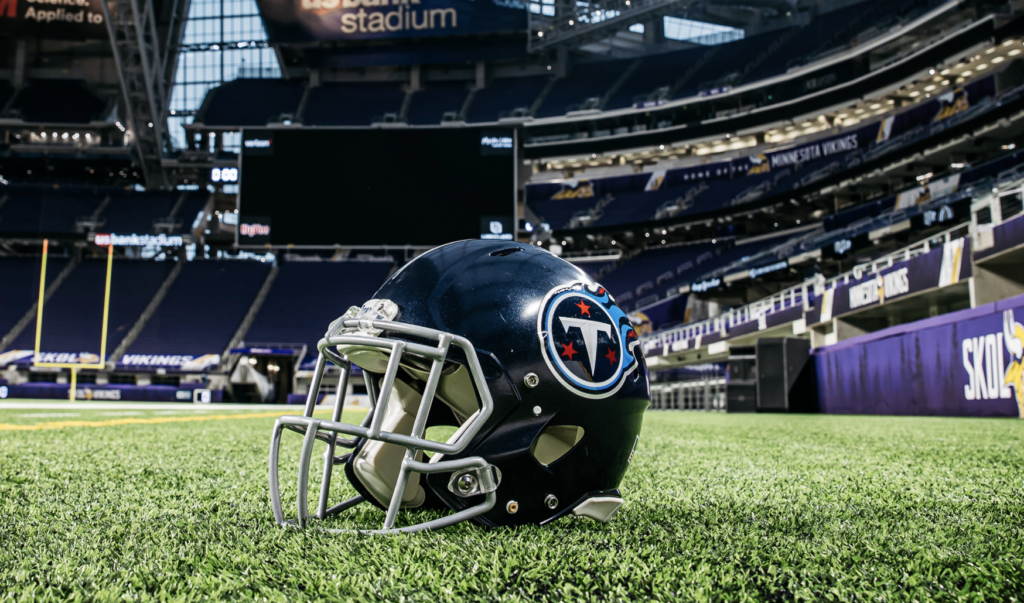
We Got Our First NFL Covid Outbreak
-
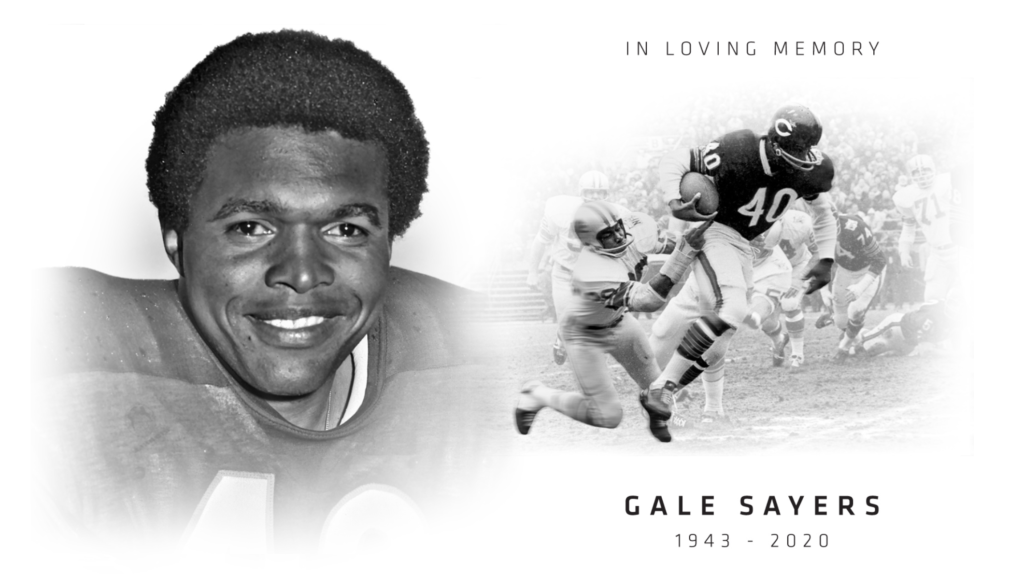
The NFL and America, Lost A Legend
-
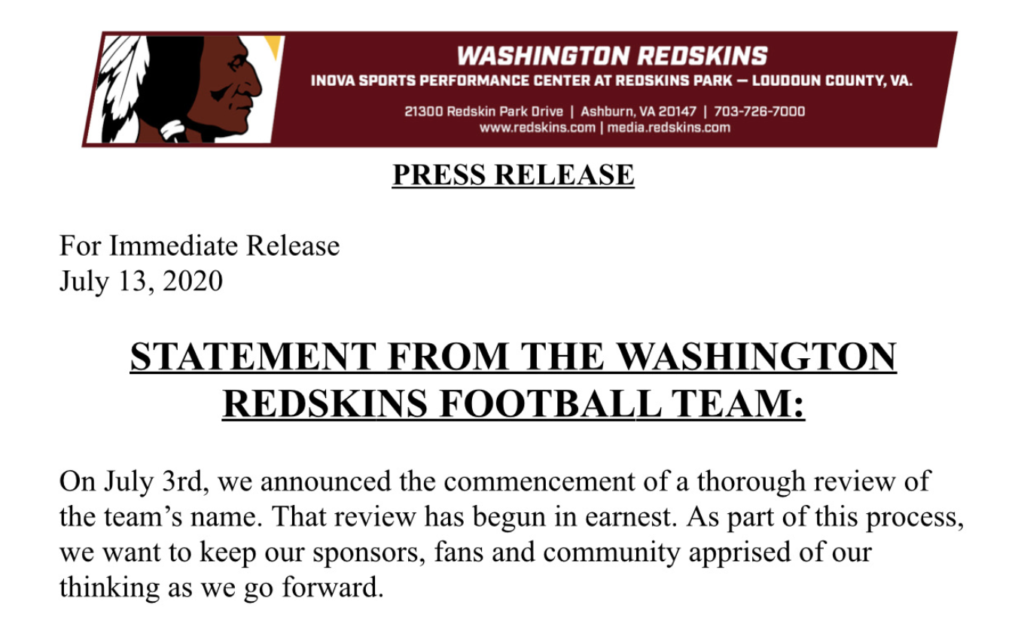
After 87 Years Washington Is Making a Change
-
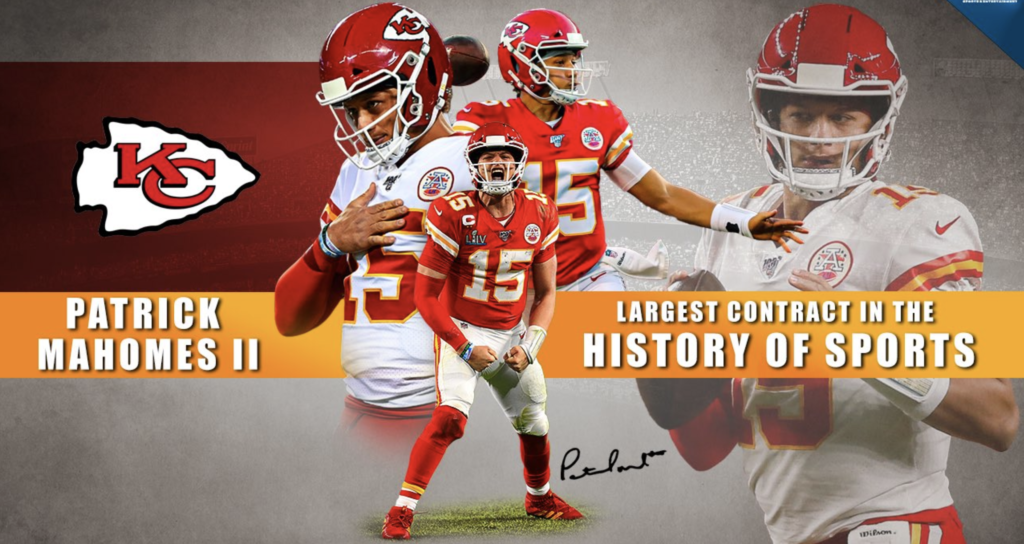
$503 MILLLION!!!!!!!!

